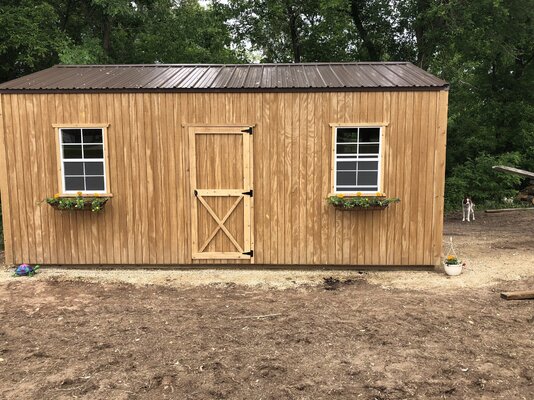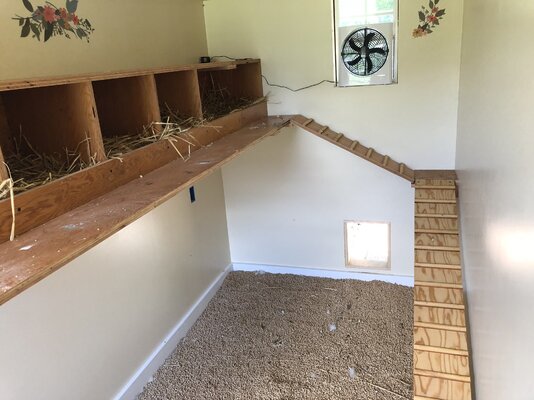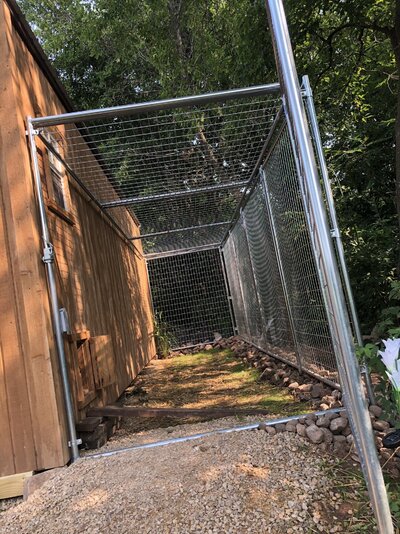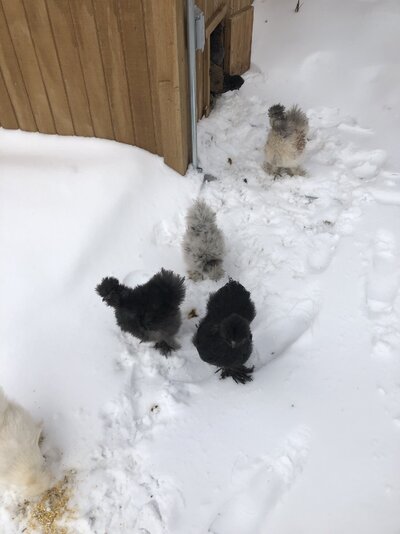The coop
We purchased a 12x20' garden shed from an Amish builder in Wisconsin. They hauled it out here.
They set it where we had already had a level base of sand and several inches of pea gravel.
We built a wall 5 feet from the right with a door to separate the coop from the garden shed and created a chicken door. We build the wall with 2x4's and put them every 16". We also did the walls of the shed so that sheetrock and insulation could be put on them. We had most of everything but for sheetrock, insulation, and paint. We ran power to the coop, insulated it, rocked it, painted the walls with off-white barn paint, and laid linoleum. The fan shown has been replaced with a digital exhaust fan; see below.
We then put straw in the nest boxes and 3" of horse bedding pellets on the floor. The silkies sleep on top or inside the nest boxes. There is now a 1"x2" rail on the outside of the walkway. A couple of silkies perch there, but most prefer on top of the nest boxes. There is now another row of nest boxes below the ones pictured.
We built a covered pen with livestock/dog panels next to it. We use it for moms with new chicks we don't want to let out to free-range for a couple of weeks or for any separation. We can shut the chicken door, securing the pen from the coop, and open the front door of the garden shed and the inside coop door for the hens who need to get in during the day. It has come in handy a few times, but for the most part, the outer gate of the pen is almost always latched open.
This coop is 5'x12' (60 sq feet) and formerly housed about 4-8 silkies for a few years. We're up to 18 comfortably and could still add more if we wanted.
We feed them Kalmbach's Layer Crumbles and Kalmbach's Henhouse Reserve is for treats. I also ferment grains and feed in quart jars. In the winter, I ferment daily. In summer, only about once a week as they free range and there are so many other good things in the garden for them. They also get a handful or two of BSF (black soldier flies) a couple of times a week as treats. Those are their favorite, with pasta noodles running a close second. We grow kale in our garden, so they have some during the summer months. We have it fenced, or they would mow it down as they are free-range. For water, we use a 5-gallon bucket with nipples.
Along with free-ranging comes possible fleas, mites, and lice as there are a plethora of chipmunks, squirrels, and wild birds who also "free-range" our yard. We were warned in the beginning by the gal who started us off with Silkies to use food-grade diatomaceous earth (DE) bi-weekly for mite prevention. I already had been using that in the house in our macaw parrot cages and around the house for ants, so started using it in the coop as she instructed. We have gone years now with no issues, albeit scaly leg mites, which is a given due to them being silkies and where they forage. It's amazing that's all they get considering the amount of varments we have that the chickens co-mingle with. I've also tried First Saturday Lime, and that seemed to work well, but it was way more expensive, so I just stuck with DE. For the for the scaly leg mites they seem to get every fall, we used a squirt of Desitine Diaper Rash in vaseline and coated their feet and legs three nights, skipping a night in between. That always worked and was okay when there was just 6 of them, but now we're up to 14 adults so went with ivermectin. We do one drop on the skin of their back, then repeat in 10 days. It takes several weeks but that works too and is faster and less messy.
Since we have Silkies and Frizzles who would suffer or may not survive the bitter cold here in Wisconsin during the sub-zero temps in the winter, we heat our coop. This also simplifies any issue with water, eggs, or combs freezing. Also, I didn't want to have to haul water in the winter. We use a Cozy Coop (flat panel heater) behind the water bucket and a NewAir thin oil-filled heater on a shelf across from the nest boxes. These two safe and economical heaters keep the coop between 35-45F. Pictured is one sitting on the shelf the heater is on.
As our flock grew from 4 to 18, humidity became a concern. We installed a 10"x10" temp and humidity controllable exhaust fan in the small window on the back side of the coop and a vent in the door between the coop and the shed. It is an AC Infinity AIRLIFT T10. We program it to kick in when the temp or humidity hits a certain number/percent. It has helped immensely.
Brooder
I asked hubby to make me a brooder as we used a cardboard box he made. (Above). The holes allowed the heater outside of it to let heat in. If it got too much, they had the whole other side of the box to cool down. It worked pretty slick for a while, but I wanted one bigger and at eye level instead of a box on a TV tray.
I showed him the brooder pictures in the brooder forum on BYC. He spent a lot of time going through, picking out good points and bad points he saw and considering things I wanted, such as the height and a hinged door that locks open. He drew it out and came up with this. On top is our adopted barn cat Stella, who decided she should be in the house to watch the chicks.
It is 62" high and 24"x36". The bottom of the brooder is 28" from the floor.
He wired it with an electrical box on the back top corner of the brooder and an LED light bar on the ceiling of it. The light has a switch outside on the brooder so we shut it off when they're sleeping. They get used to darkness this way. The heat lamp is a black ceramic bulb in a cover rated for such. The heat lamp plugs into the thermostat. We found having the thermostat helps keep the temperature steadier. It's an Inkbird ITC-306T. We've had it for three or four batches of chicks and are glad we have it.
We lined the bottom of the walls with some leftover linoleum. If you build one, consider doing something like this to make cleaning easier and protect the wood.
We made the brooder a nipple waterer. The coop has a 5-gallon bucket with nipples like this, so they'll already know how to use them when they transition to the coop. Hard and thick plastic works better. This is an old Tupperware cereal container. You can get the verticle nipples on Amazon. We use a horizontal nipple bottle for water for their first two to three weeks, then convert them to this.
The silkie chickens
We only have silkies. There are currently 14 older silkies (11 hens and 3 roo) in the main coop. I plan to try out color genetics and sex linking.


The border collie, Josie, is usually near them. There's a forest right there to her right and she chases them back up from there.










The future breeding stock for Feb. 2024 consists of hens Marsha (splash), Charlotte (chocolate), and Missy (black), with Piper the mauve rooster. Blue boy is another rooster I'll breed something with down the road.
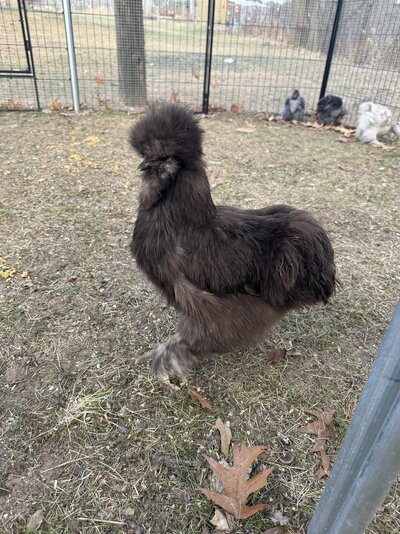
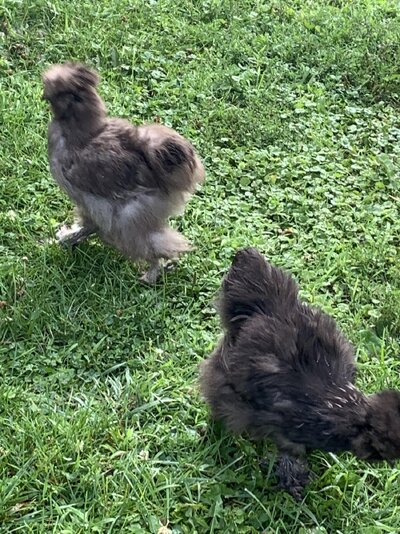
The border collie, Josie, is usually near them. There's a forest right there to her right and she chases them back up from there.
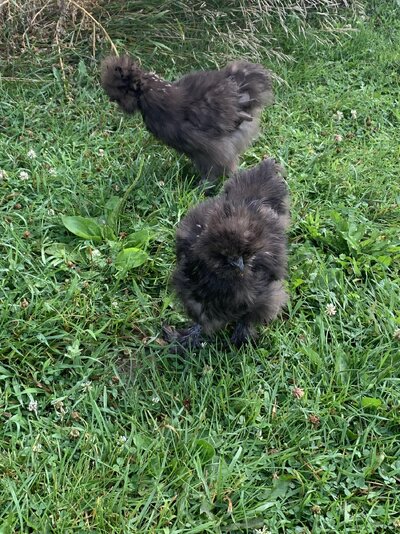
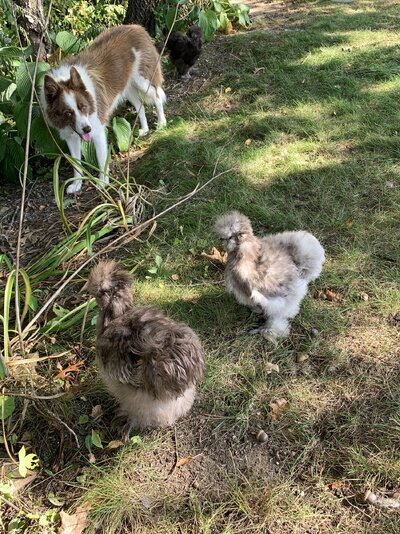
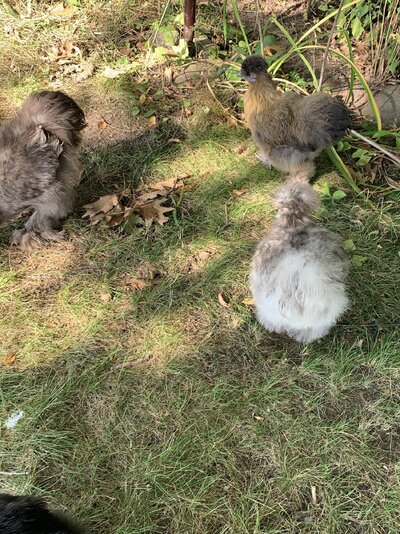
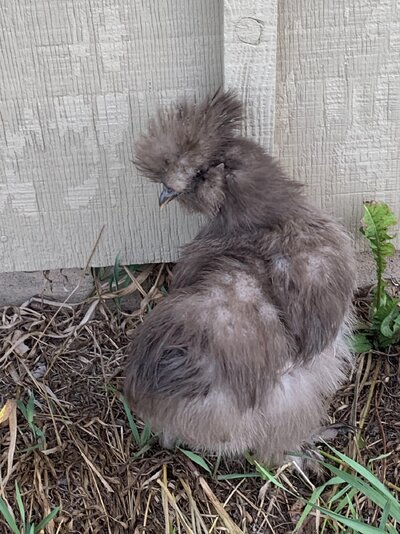
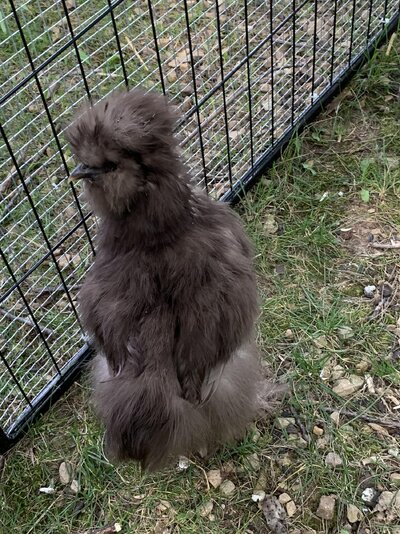
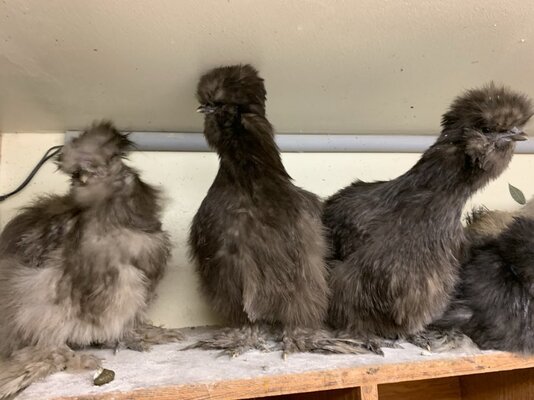
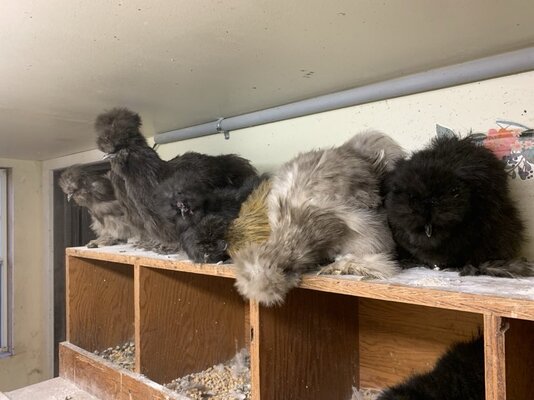
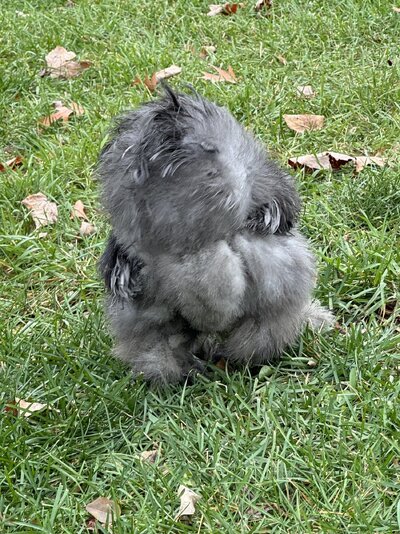
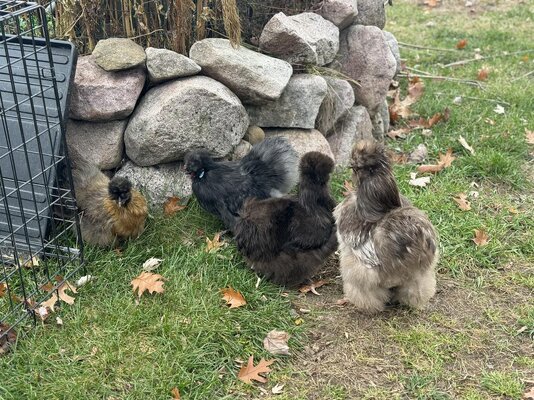
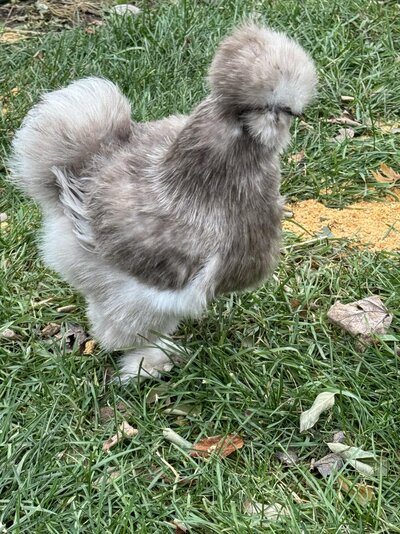
The future breeding stock for Feb. 2024 consists of hens Marsha (splash), Charlotte (chocolate), and Missy (black), with Piper the mauve rooster. Blue boy is another rooster I'll breed something with down the road.

